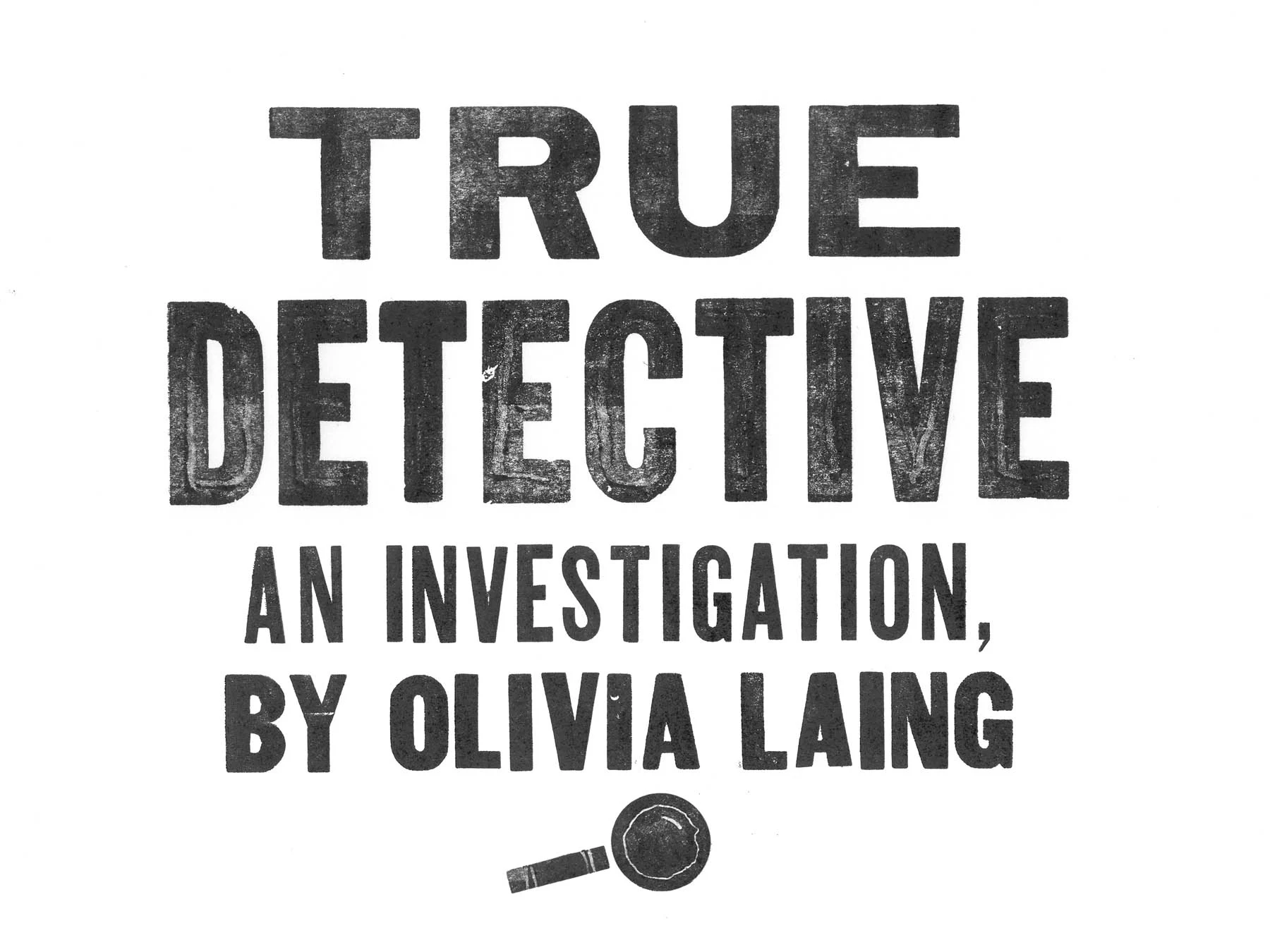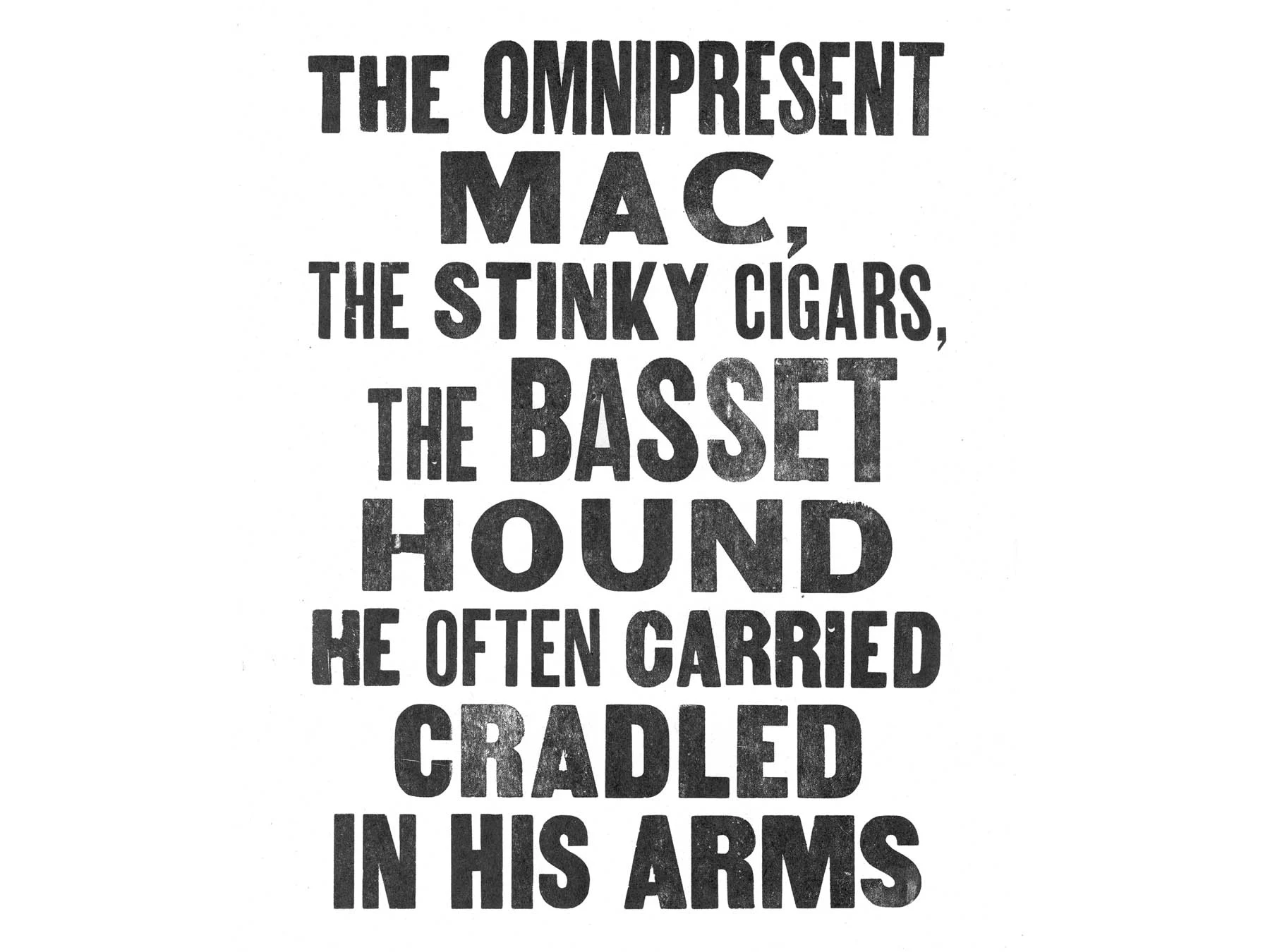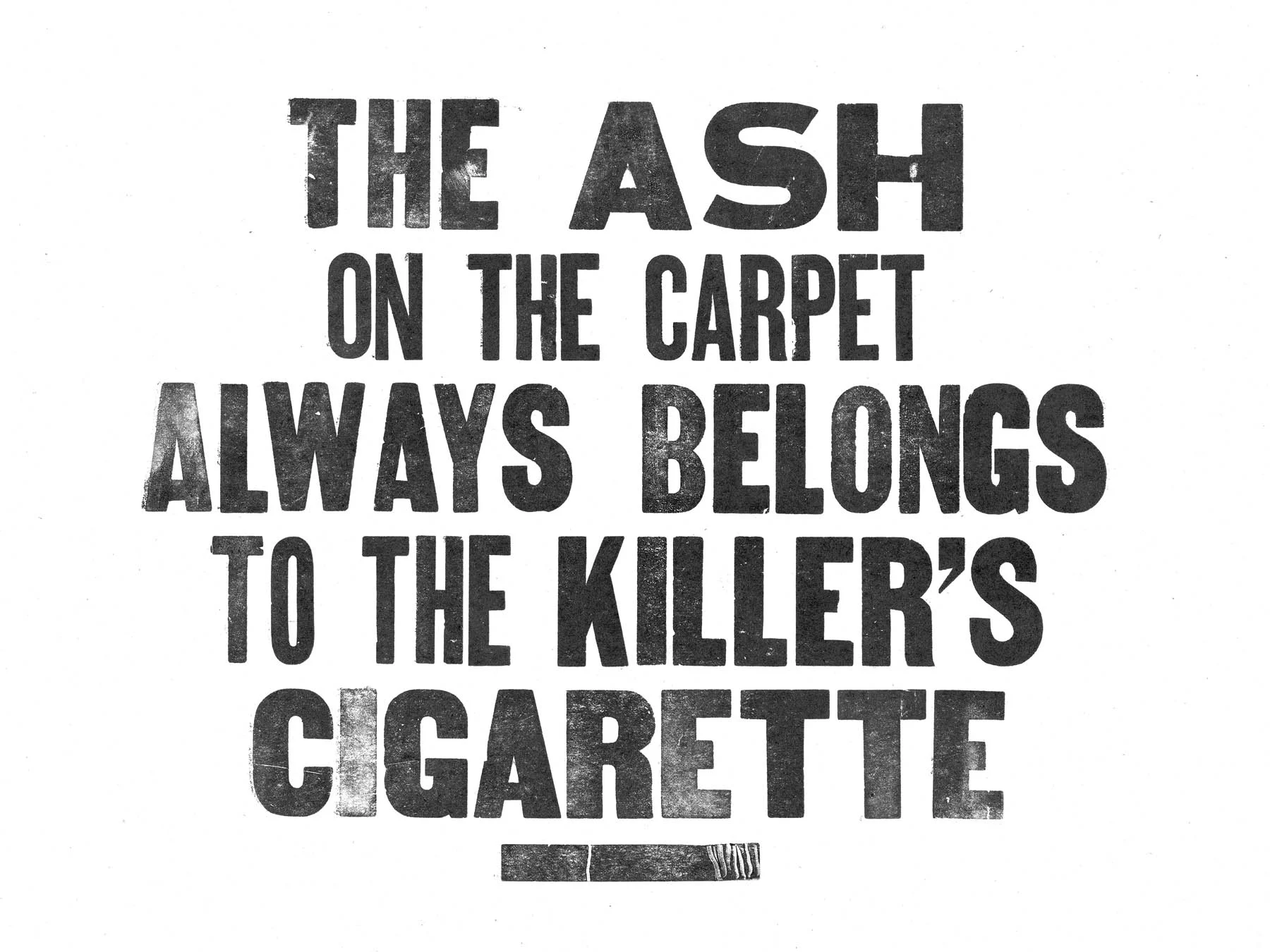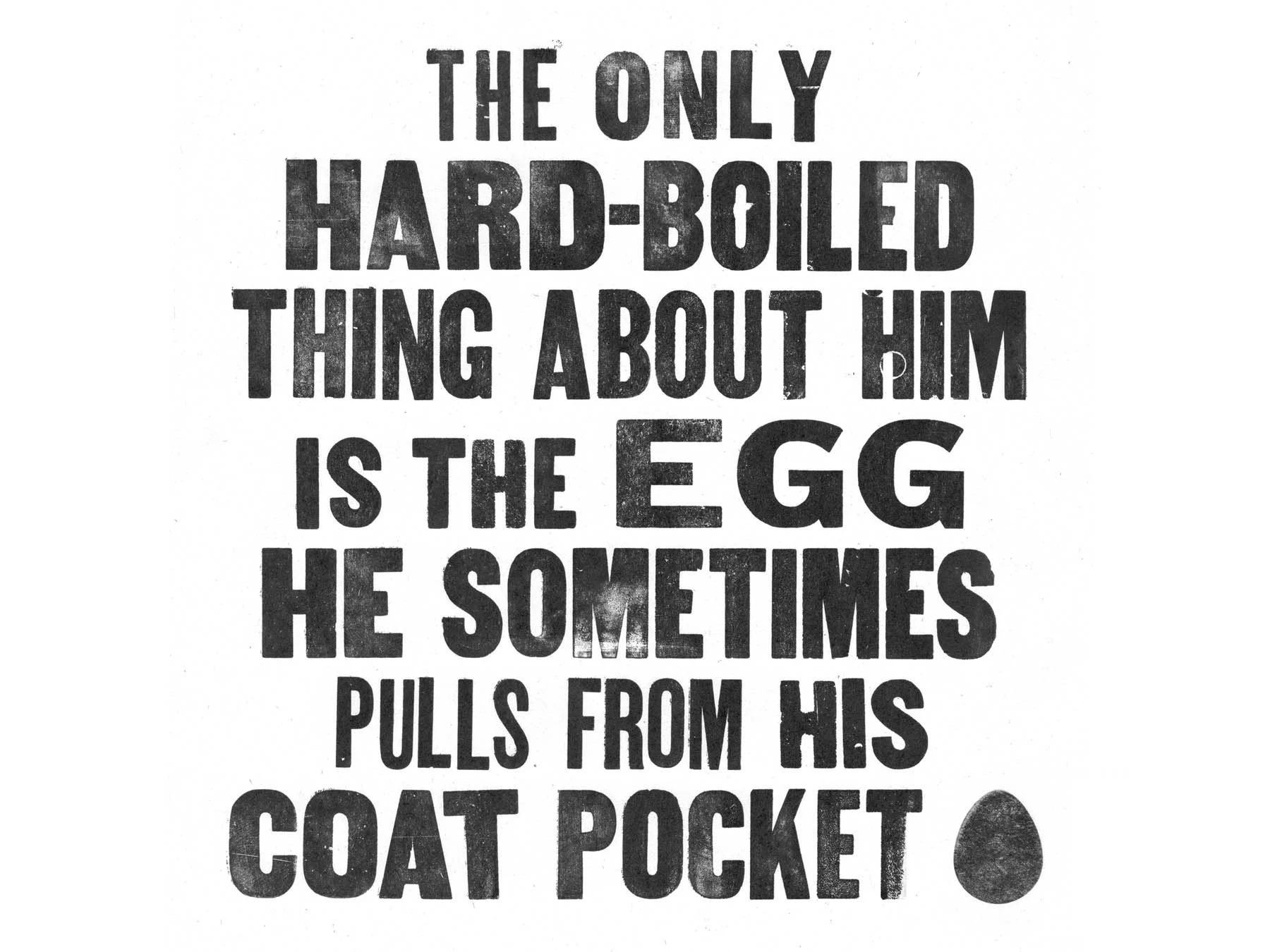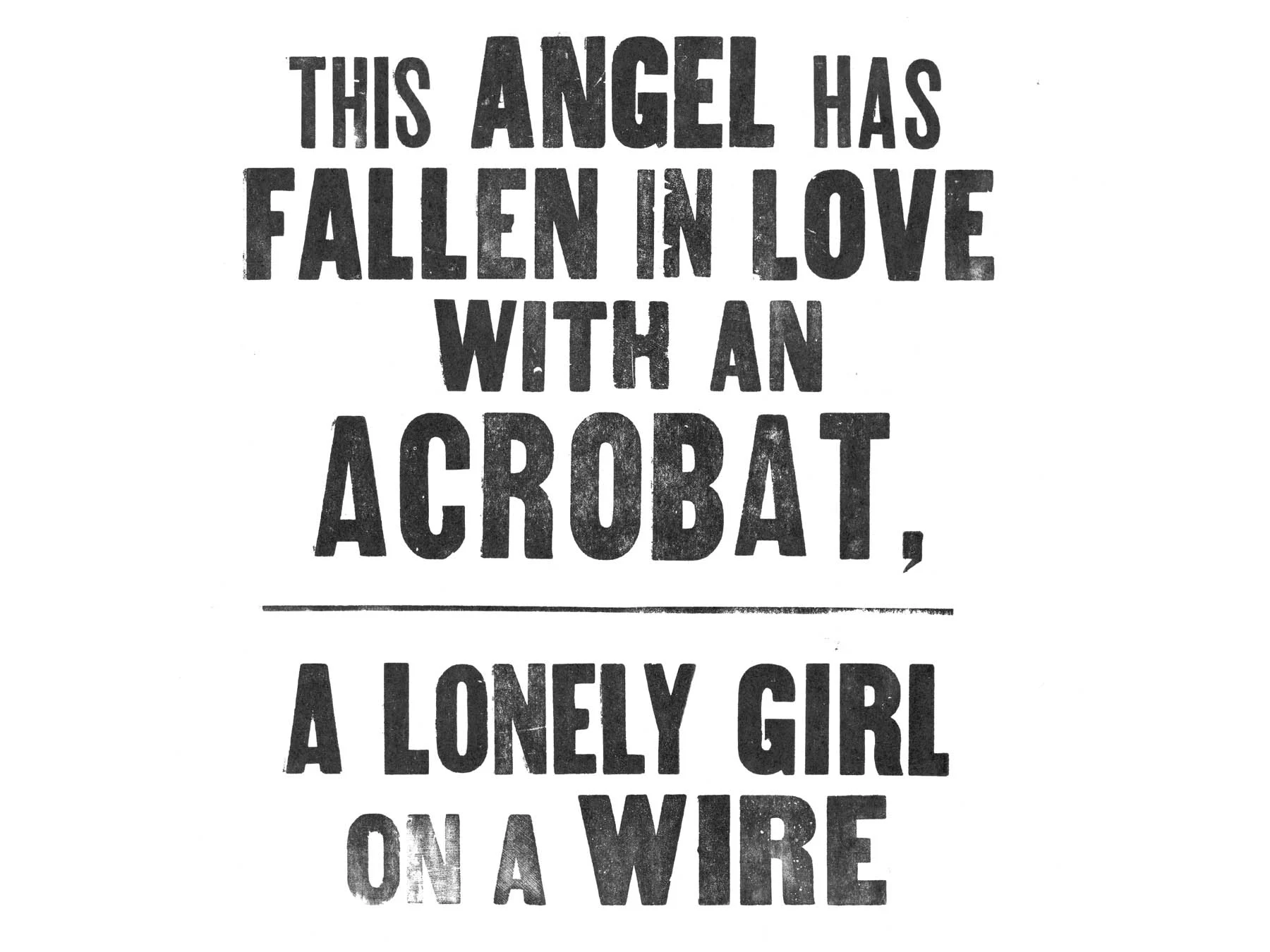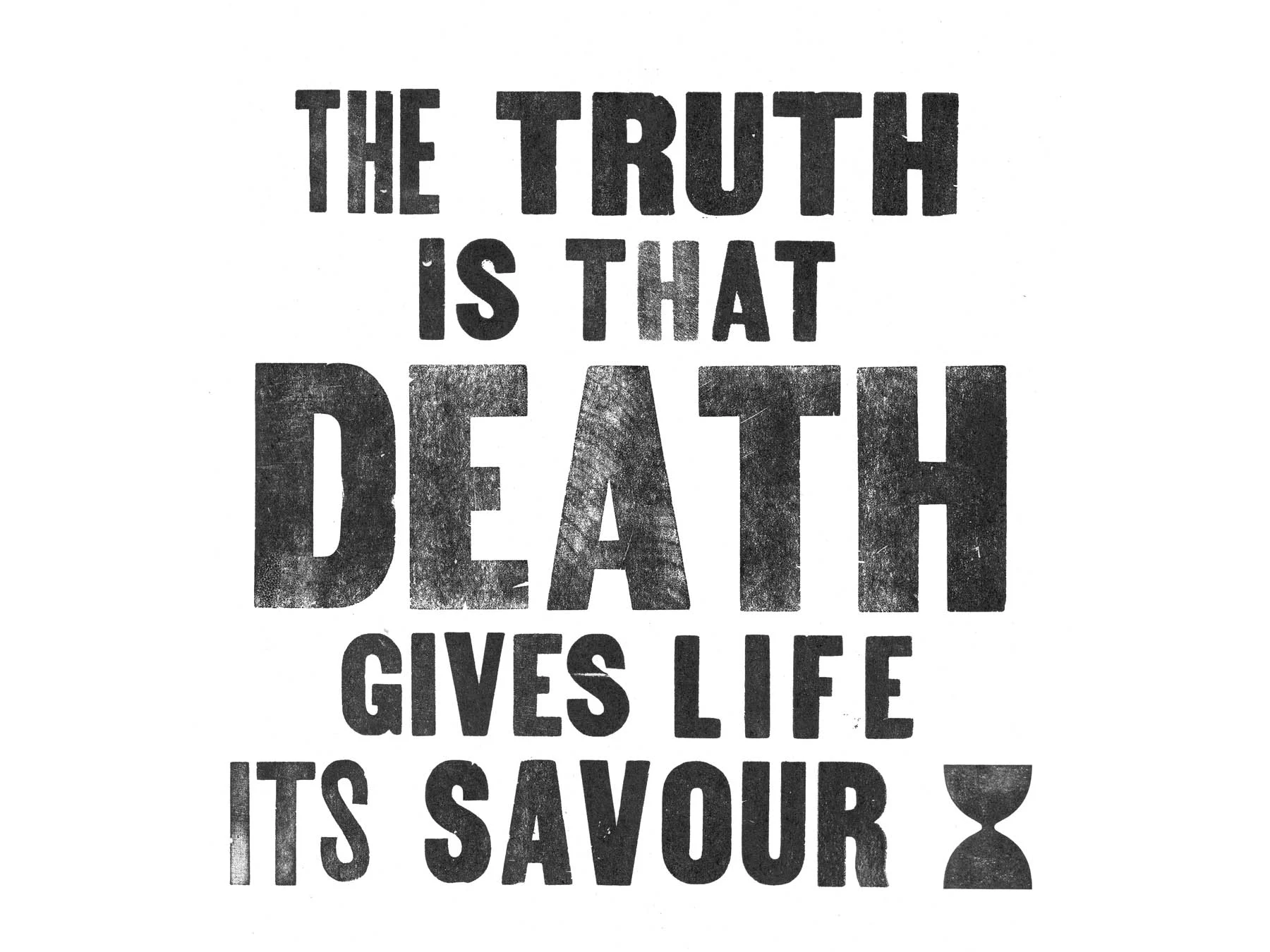

During the pandemic I filled the space where people used to be with television detectives. I found them very soothing, though for a long time I couldn’t put my finger on why. I was, like everyone else on the planet, exceedingly anxious at the time, particularly for my husband, in his seventies and in possession of two aneurysms, weakened areas in his arteries that can precipitate massive internal bleeding. For as long as I’ve known him, he’s wolfed down detective novels, at least one and sometimes two a day. I started up with the detective shows as a way of keeping him company, spending the arrested time together.
The green velvet sofa was the slumped center of those stopped clock years. Eight o’clock, dinner eaten, the TV wheeled from its cupboard. Lockdown one: “Morse” and “Lewis”. Lockdown two and three: “Midsomer Murders”. The world timidly encountered post-vaccine: “Cracker”. After all that relentless Englishness, that downbeat provinciality, it was a relief to switch to “Columbo”, set on the sun-saturated west coast of America. Whatever it was I’d been searching for in all those accounts of killers apprehended and murders solved was finally satisfied by this most gentle of TV detectives, so beautifully acted by Peter Falk.
That isn’t to say I grasped him all at once. In the first episode I watched, Lieutenant Columbo played a tuba to an audience of unnaturally thrilled school children. He got his man alright (in this case, woman: a sex therapist who murdered her lover while disguised as her sexy alter-ego, Lisa), but there was something lightweight, even cartoonish about him. He was like Tintin’s American cousin, tooling around Los Angeles in his comical little car, weighed down with jokey props: the omnipresent mac, the stinky cigars, the basset hound he often carried cradled in his arms. Of course the dog was called “Dog”. What could be cuter?
“Columbo” ran from 1969 to 2003, with a long hiatus between 1978 and 1989. We’d accidentally started in the second half. Once we realized our mistake we went back to the pilot, “Prescription: Murder”. There was the iconic mac, on a dapper little man, barely recognisable as the shambolic lieutenant. For the next few months we worked our way through the decades, sometimes slamming two or three a night, accompanied by a ritualistic Bendicks Bittermint. It was May by the time we reached the finale, “Columbo Likes the Nightlife”, in which a decidedly gray and paunchy Columbo attends a rave, a modernizing rite of passage also undergone by Morse in the far darker “Cherubim and Seraphim”, made at the height of tabloid panic around ecstasy and raves in 1992.
It didn’t take more than a few episodes to realize Columbo had been pulling the wool over my eyes, tricking me just as he does each killer. Like every murderer, from Johnny Cash’s redneck musician to Faye Dunaway’s manic society hostess to Janet Leigh as a former Hollywood star with a failing memory, the first-time viewer is confronted with a bumbling caricature of a detective, who pulls shopping lists from his pocket instead of evidence and regularly loses his train of thought. Who is this nincompoop, barging into people’s houses and asking the price of their shoes? Why can’t he finish a sentence? What is he doing lurking in their greenhouse or dangling from their tree? “The ubiquitous Lieutenant Columbo,” sneers one aggrieved suspect. A man this incompetent can’t possibly be a threat.
But as even the most arrogant murderer is forced to realize, this bumbling persona is a smokescreen, a dangerous disguise. “Columbo” is unusual among detective shows in that the audience sees the crime committed at the top of the episode and so almost always knows the identity of the killer. The pleasure doesn’t lie in finding out whodunnit, but in watching Columbo politely chip away at their cover story until it shatters into pieces. The more loathsome and rude the murderer, the more satisfying a process this is. (Likable killers form their own list, topped by Ruth Gordon from “Harold and Maude” as a gleefully unrepentant crime novelist who locks her grasping nephew-in-law in a safe, and Donald Pleasance as a melancholy winemaker, spectacularly caught out by the perfection of his palate).
I recognised at least one of Columbo’s techniques because I use it myself. It’s as much a writer’s tool as a detective’s. He deploys repetitive questioning to ensnare his suspects, checking up on the most innocuous details in order to uncover hidden motives or expose gaps in an alibi. I don’t want to lock up the people I write about, but there is something of the same relentless, obsessive pursuit, the desire to drill down through layers of mismatched evidence and uncover the story. I was particularly amused to see Columbo asking people questions to which he already knows the answer, a technique I thought I’d invented, perennially fascinated by how much and in what unexpected ways someone will diverge from the record.
So much for the interview. Then there’s the matter of his uncanny vision, all the more impressive since Lieutenant Columbo's, like Peter Falk himself, only has one eye (the other is glass, hence the trademark squint). From the moment he walks into a crime scene, he’s almost inhumanly skilled at locating the tiny disturbances in the fabric of reality that mean someone is telling lies. His gift is to spot what doesn’t belong, generally a tiny physical object that will be used to prise apart the murderer’s story.
Off the top of my head, these objects include a carnation, a feather, a toy soldier hidden behind a shelf of war books, a missing flask of coffee, a cotton glove, a set of car keys, the flint of a lighter and a broken fragment from a matador’s lance. My green Bendicks Bittermint wrappers would definitely prove a giveaway, were I ever to bludgeon a no-good brother who wanted control of my racetrack over the head. In one of the last episodes, “Strange Bedfellows”, it’s the length of the tails of two mice released by the murderer that gives the game away. As Columbo muses to himself: “Tiny ashes, little mice, they lead you to the big things.”
I’d started watching detective shows as a way of managing anxiety, not that I could have articulated it at the time. By the end of the first year of the pandemic nothing felt safe: not a tea party or a train. Storms of panic kept blowing through my nervous system, setting off alarms so powerful it was all I could do not to throw myself to the floor. Hardly any wonder I was addicted to watching scenarios where jeopardy was exposed, then tidied away. There were many procedures I used to bring myself back into working order, the most effective being therapy. By the time I got to “Columbo”, I was getting better. I understood at least some of what had spooked me, and so I could see why this particular show soothed me so much.
It presented a vision of the universe in which truth not only existed but had a definite form. In Columboworld, every action leaves a visible trace, an eddy that can be followed directly to its source, assuming you have the patience and clarity of vision. It’s not possible to hide a crime, because the hiding too will leave a mark, a kind of forensic smear that it’s impossible to eradicate. There is nowhere to dump a corpse or conceal a weapon that won’t be found, no false alibi that cannot be unpicked. While there is police corruption in this universe (in “A Friend In Deed”, the murderer is Columbo’s own police commissioner), Columbo is immune to it, a cuddly personification of absolute justice, even-handed and impartial even when it involves the LAPD itself.
One of the Lieutenant’s signature moves is to invite murderers to explain the oddities and inconsistencies he’s discovered, flatteringly implying that their superior intelligence or expertise could help him out of a hole. Indulging him is a mistake and yet the murderers are often so vain and overconfident that they can’t help themselves. They’re baffled by the extreme smallness of the things he’s latched onto, mistaking size for consequentiality, and so they often try to suggest their presence at the crime scene is purely random. But in the “Columbo” universe, the usually all-powerful forces of entropy and ambiguity have no sway. Nothing is random. Everything is meaningful. The ash on the carpet always belongs to the killer’s cigarette.
This was not, needless to say, how things were panning out in the far more random and frightening universe I inhabited. The ongoing narrative for the past few years had been lies and their concealment. Trump’s lies. Boris Johnson’s lies. The lies of governments and police forces and corporations about what they knew or did or facilitated or covered up. One night I was watching “Columbo” when a friend texted to say that Trump had been found guilty of sexual assault but it hadn’t changed the odds of his winning the Republican nomination. Lies and criminal behavior no longer seemed to possess solid forms. You didn’t even need to give a convincing denial. Being the liar who got away with it was becoming so attractive people wanted it as president and prime minister too.
Another evening I watched a video on repeat by the comedian Jordan Firstman, who specializes in surreal impressions. This one was titled “This is my impression of the truth trying to catch up with Donald Trump”. A sweating man runs full tilt then pulls up, panting. “He’s gone again. Every day, every day I try to catch up with him. My co-workers, they all think I’m crazy…but that man will see me. Because I’m real! I’m real.” His voice cracks pathetically on the second real. It was a joke but it wasn’t. He—I, we—really needed Columbo at our back.
It hadn’t escaped my notice that the people who commit the murders in “Columbo” tend to be pretty fancy. They represent the powerful top drawer of LA society. Generals and politicians, movie stars, magazine magnates, owners of racehorses and football teams. They live in huge houses, often with a whole staff of gardeners, mechanics, cooks, maids and cleaners, several of whom end up accidentally observing the giveaway detail—a power cut, a missing truck—that will allow Columbo to identify the killer.
One of the major pleasures of the show lies in watching these unpleasant and entitled people, who believe their wealth and status gives them total power, as they underestimate, patronize, bully and finally capitulate to the unswervingly polite and humble Columbo, a blue-collared Regular Joe on what he repeatedly declares is a very small salary. Sometimes they threaten to have his investigation shut down, by ringing their personal friend, the governor or mayor, but the truth always catches up with them eventually. It’s the revenge of the little guy, class war in a very modest way. Power is held to account; what has been hidden is laid bare. Not, needless to say, what was happening in the real world, where the 1 percent seemed to have carried out a heist so successful there wasn’t enough money left to pay for hospitals or schools.
This isn’t the only way in which “Columbo” is kind of radical, an antidote to the oppressive patriarchs who’d waddled back into power. While it’s true that Falk’s characterisation does get goofier as he ages, in even the earliest episodes he’s determinedly uninvested in producing the veneer of infallible masculinity usually regarded as so intrinsic to the television detective. Columbo is gentle. He has very good manners. He doesn’t drink too much or hate women. He doesn’t cheat on his wife, like Cracker, or hit on suspects, like Morse (he does kiss Faye Dunaway but he’s in deep cover as a love-addled clown at the time). He isn’t lonely and grief-stricken, like Lewis. You never see Mrs Columbo, but he mentions her in almost every episode. He might live in Los Angeles, like Philip Marlowe, but he doesn’t even carry a gun. The only hard-boiled thing about him is the egg he sometimes pulls from his coat pocket (in one notable episode he cracks it on the murder weapon, a tire iron). Bottom line, he’s neither melancholy nor misanthropic. He loves his job, but while the other cops are gloating over a victory, he’s taking his dog to the park.
When I was about halfway through “Columbo”, I looked up when Peter Falk had died and discovered that he suffered from dementia in his final years. Actor and character are not of course interchangeable, but it was odd and a little uncanny to watch as the lieutenant became increasingly offbeat and vague in the last few episodes, not so much artfully bemused, dreamy, somnolent and unhurried as flat-out lost in the fog. In the penultimate episode, the dire “Too Many Notes”, Columbo forgets the word “unconscious”, conducts an imaginary orchestra and goes off into a jarring non-sequitur about the cuteness of walruses. He manages to catch the killer, a film composer played by Billy Connolly but as the credits roll he’s making the bereaved girlfriend of the victim teach him “This Old Man” on the piano, a grotesque parody of his usual sensitivity with damaged people.
The anxiety I experienced during the pandemic was to do with the state of the world, but it coalesced much closer to home, with the specter of my husband’s death—or, somehow worse—the prospect of losing him to dementia. Ian is far older than me (Peter Falk was 22 years older than his wife, Shena Danese, but we’ve got them licked). I’m not exactly resigned to him dying first but I’m especially terrified of him becoming absent while still present, unreachable and vacant, losing the plots he’s followed so assiduously for so long.
The truth: what does the truth mean, when two people are inhabiting conflicting realities, with different memories and interpretations? I like believing in the truth as an abstract virtue, an element that remains pure and unmixed, but this has not always been attainable in interpersonal relations, at least in my experience. The truth is so regularly confused with what is personally witnessed or believed that it becomes irretrievably partial and muddy, even when both participants are fortunate enough to possess working memories.
At first glance, “Columbo” refuses this reality, offering a cheerful counterfiction, a safe space where things are crystal clear. But the fact that Falk himself keeps aging complicates the story. In a way, the show with its constant parade of disappearing bodies is about mortality and loss and how to weather them, something that Falk’s metafictional outing in the film “Wings of Desire” in 1987 only serves to underscore.
During the long interregnum between the first run of “Columbo” and the second, Falk was invited to play himself in a film by the German director Wim Wenders. “Wings of Desire” is about the angels who watch over the city of Berlin, protecting or failing to protect its human citizens, who are oblivious to their presence. One of the angels wishes to defect, to enter the mortal realm, to taste and feel and live inside of time. The possibility of loss, he realizes, is what makes human life so desirably intense, something I try to remind myself in moments of blind terror. This angel has fallen in love with an acrobat, a lonely girl on a wire. The only human aware of his presence is Falk, in Berlin to make a movie. It turns out that he too was once an angel, who chose to relinquish his immortality for the transient pleasures of earthly life.
Falk is forever wandering away from the shoot and into a city still ruined by war. He sketches, looks at the bombed station, buys coffee and cigarettes at the currywurst stand. He is explicitly conflated by people around him with his most famous character. “Isn’t that Columbo?”, a shambling lad asks his friends. “Not in that shabby coat,” another says. “He wouldn’t be out here in this muck.” Later, the acrobat herself encounters him at a glowing coffee stand by night. She too recognises him, calls him “Lieutenant” and asks for his help finding a man whose name and address she doesn’t know. “This is a tough case,” Falk says, grinning. He exists to seduce, a propagandist for the minor key pleasures of mortal existence: coffee and cigarettes, rubbing your hands together on a cold Berlin day, knowing none of it will last.
I love the dreamy metafiction the film proposes: that Columbo is an angel. Or rather—let me get this straight!—that Columbo is played by an angel who chose instead to be a man, and furthermore chose to spend his limited time on earth playing at being a detective who embodies justice, who possesses the all-seeing clarity of God while eating chili and feeding ice cream to a basset hound. Doesn’t that make a lot of sense? “Just one more thing,” the fallen angel says, leaning in the window, puffing on his cigar. The truth is that death gives life its savour. The truth is that time is running out. The truth is that everything unravels. His curiosity is unbounded, he knows the rich tell lies and the little things count. “What did you pay for those shoes?” “You left enough clues to sink a ship.” “This is Sunday and I promised my dog I’d take him to the park.”

Born in 1977, British writer and culture critic Olivia Laing has built a career on original, academically rigorous and unclassifiable work. They are the author of six books, including the novel “Crudo” (2018), the international bestseller “The Lonely City” (2016) and “Everybody” (2022). Their books have been translated into 22 languages. They write on art and culture for the Guardian, Financial Times, New York Times, and more. Their collected essays on art, “Funny Weather: Art in an Emergency”, were published in 2020.
Literally is WePresent’s slowly expanding library of written commissions by some of the best writers in the world. The typography on this page was created by Mikey Burton.


